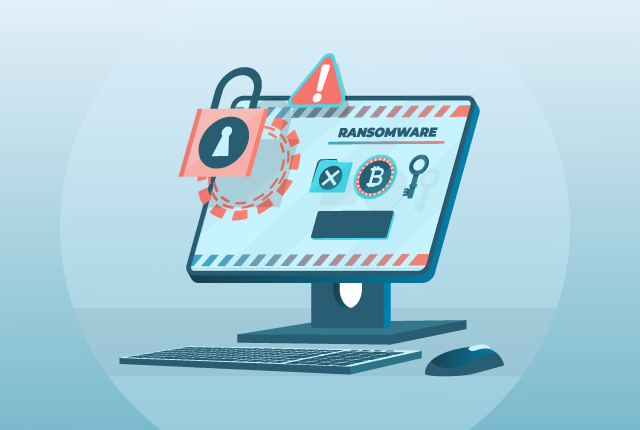
We have some bad news: There is almost no way of creating a completely secure software program. Vile ransomware sneaks in through a variety of different cracks in safety infrastructure, infiltrating machines, and eventually, entire organizations through an email link accidentally clicked.
Ransomware, however, is nothing new, and like every aspect of technology, it has also evolved. Previously, it used to be an occasional expense, but now, with the evolution of technology, hackers have managed to infiltrate every industry vertical, from energy, to transportation and healthcare with ransomware attacks.
But if you’re in the software industry, you know this already. So exactly what is a fast-growing product company — under the pressure of breakneck release speeds and a demanding market — supposed to do to guard against ransomware?
The short answer: Work with a qualified QA partner. Your partner can help thoroughly comb your product in search of areas of vulnerability.
Ransomware hackers prey on vulnerable areas of your app. A QA partner keeps your users and product safe. (Click to Tweet! )
Before we get into the details about preventing ransomware-based attacks, let’s learn a little more about how they’re devised and waged.
How Is Ransomware Achieved?
Hackers rely on entry via an individual browser window, as this is the place where many top enterprise application systems run. It’s the most direct access point into your product, and unfortunately, it’s one of the easiest entry points there are.
Typically, an email including a link to malicious domain is sent to someone within the company. If clicked, the domain seeds an “exploit kit” on the user’s system. Essentially, these kits scan the browser for vulnerabilities (the active use of an outdated version of the browser, for example) and lets the hacker know that it is ripe for access.
Once hackers gain access via a browser, they co-opt a user’s administrative privileges. From here, they can do a laundry list of bad stuff: freeze your operations, withdraw money, make purchases, steal and sell user data, and much more.
5 Cybersecurity Best Practices to Combat Ransomware
Although ransomware can cause significant damage, it is not something that can’t be prevented. Here are 5 of the industry best practices to combat ransomware.
- Implement the 3-2-1 Back-up Rule: Regularly backing up configurations, system images and data can help companies resume operations quickly, even if ransomware strikes. In fact, you can go a step further and avoid a single point of failure by dispersing data using the 3-2-1 backup method. This is a pretty simple method, where three or more copies of a document are stored in different locations, using two distinct storage mediums and storing one copy off-site. This helps to reduce the chances of the hacker getting access to all the information. Moreover, in case one storage medium becomes vulnerable in a data center attack, the 3-2-1 approach helps to ensure that not all copies are compromised. In fact, many organizations are going a step further by keeping at least one copy on indelible (cannot be deleted) and one on immutable (cannot be changed) storage.
- Implement a Zero-trust Model: This is a mindset that focuses on not trusting any users or devices, even if they are inside the corporate network. Implementing multi-factor authentications, and role based access controls can help to monitor for, and mitigate malicious activities. Also, once there is a limit set to access backups, then it’s easy to shut down common entry points for ransomware. In fact, organizations are now moving towards just-in-time (JIT) security practices, where access is granted on a need basis, or for a predetermined period of time.
- Prompt System and Software Upgrades: Using software that is out-of-date allows attackers to exploit unmitigated security vulnerabilities very easily. To minimize this possibility, ensure that all infrastructure, software applications and operating systems are upgraded and patched regularly. It’s not possible to fight ransomware with outdated technology.
- Network Segmentation: For hackers, a flat, single continuous network is the easiest to attack, since they can spread across the entire infrastructure with ease. To minimize such risks, implementing network segmentation and micro-segmentation are good options. Networks are typically divided into multiple zones of smaller networks where access is managed and limited, especially for all crucial data. All vital infrastructure functions are maintained off the web. Additionally, a zero-trust model would also mean segmenting all third-party vendors as well.
- Endpoint Visibility: For most organizations, gaining visibility into remote endpoints continues to be a struggle. For hackers, it has become a common practice to get past front-line security, and stay dormant long enough to find a vulnerability and the right time to attack. Hence, it’s important to have tools that provide complete visibility across the entire environment to detect anomalies and alert admins of malicious activities on the network. This will help to mitigate vulnerabilities as well as threats, before hackers have a chance to attack.
How Can an Effective Partner Help?
It’s the responsibility of the product company to build products that are as airtight as possible when it comes to security vulnerabilities. But not every product company has the rich experience in security testing and domain expertise that a well-vetted, qualified QA partner has.
Proper security testing is a must. Here are a few areas that can be easily secured by a competent partner:
- XSS Injection: An attack in which a hacker injects client-side scripts into pages of a web application viewed by other users. QA partners get to know the code of your product better than the developers themselves, so they can generate a list of targetable areas within the application.
- SQL Injection: Similar to an XSS injection, malicious SQL statements are inserted into an entry field for execution.
- URL Injection: In this attack, the insertion of dangerous code makes it look like your application is referencing or giving credit to a detrimental site. Your partner can diligently comb your product for every possible link that may fall victim to a URL injection attack.
Delivering high product quality is something that many partners do well. But safeguarding your product, protecting your users, and shielding your company’s reputation in the market is a challenge that not many can confidently take on. Learn more about onboarding a new QA partner to be effective.
The right partner ensures that the above boxes are checked, and that your team is up to date on the latest security testing best practices. It also guarantees that your testing is thorough, your test coverage is optimal, and every vulnerable field or path within the application is secured.
Want to learn how security testing services can protect your business?





